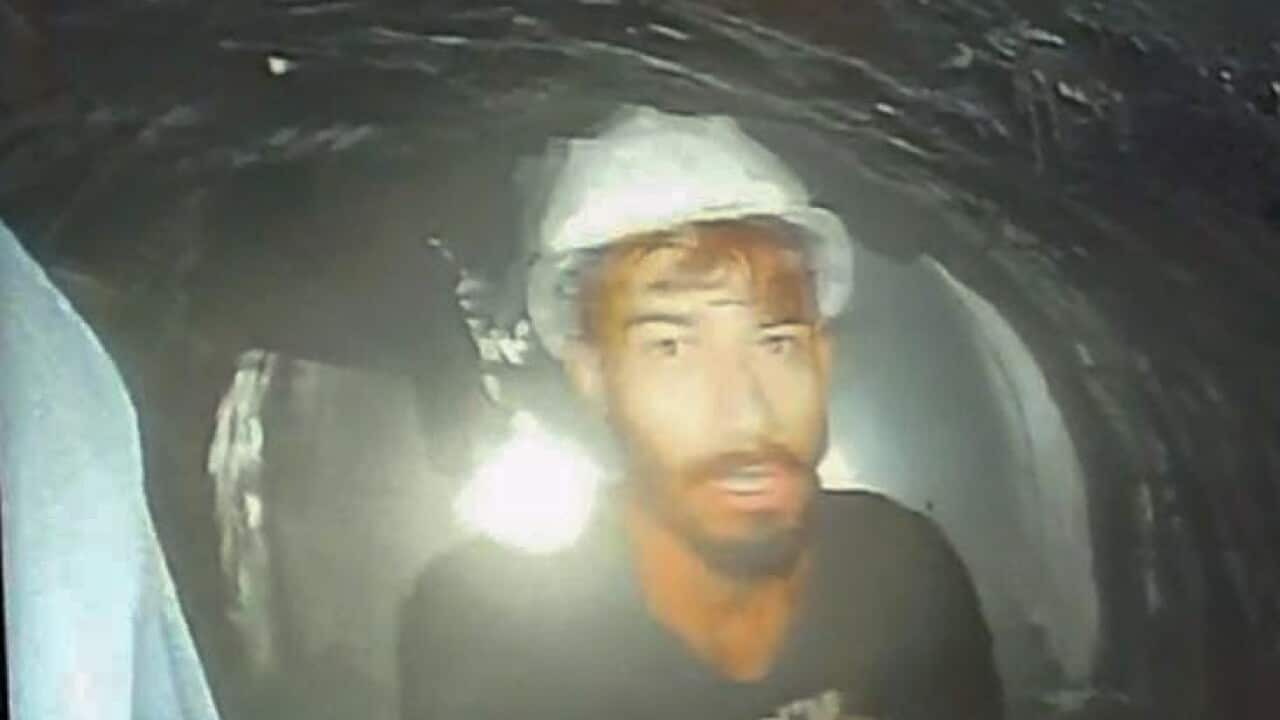TRANSCRIPT
Rescuers have released video of construction workers who have been trapped in a tunnel since the 12th of November in mountainous northern India.
“You okay? If everyone is okay, show yourselves to the camera. Raise your hands and smile. We will reach you all soon, don’t worry. Take the camera out slowly and show everyone else. Show everyone on camera, and we are able to see you.”
That message was conveyed as an endoscopic camera was sent in through a pipe used for sending food, water, and medicine to the 41 trapped workers.
They are all healthy and had been receiving dry food like nuts, roasted chickpeas and popcorn through the pipe.
Oxygen is also being supplied to them through a separate pipe.
“I think it’s important that we should send food now. Tell them that we will clean the pipe a little later, with water and a blower. We will clean the pipe with water in a bit. Place the camera back in the pipe, we will pull back the camera. After the camera is back, we will release water to clean the pipe. You all please move back.”
About 200 rescuers are set to drill horizontally through a 60-metre pile of debris to push through a pipe large enough for the trapped men to crawl out.
Authorities are simultaneously working on five other rescue plans, including drilling vertically from the top of the mountain.
Helping in the rescue effort is Professor Arnold Dix, President of the International Tunnelling and Underground Space Association.
“We are doing a lot of work at the moment to make sure what we do is safe and making sure that the people doing the evacuation are safe. And I have just been down in the tunnel. An enormous amount of work has been done there in preparation. And we are just coming up here on top of the mountain to consider other options as well. But the work I have seen, I have only arrived yesterday, but the work even between today and yesterday is extraordinary."
But he says the rescue remains extremely hazardous.
The workers were trapped when a landslide caused a portion of the 4.5-kilometre tunnel they were building to collapse about 200 metres from the entrance.
The tunnel is part of the Chardham all-weather road, a flagship federal project connecting various Hindu pilgrimage sites.
A doctor at the collapse site, P-S Pokhriyal, who frequently communicates with the stuck workers, suggested to them that they practise yoga and stay hydrated.
"I have given the trapped workers the suggestion to take Vitamin C, calcium and drink Oral Rehydration Solution and keep themselves hydrated. I have asked them take rest and practice yoga and meditation."
Dr Sandeep Vohra is concerned for the men's mental health.
"Psychologically, there has to be a lot of distress. Now, the symptoms could be in the form of anxiety, palpitations …you know, serious negative thinking and in extreme cases, you could have a death wish also."
He says maintaining an open line of communication between the rescuers and the trapped will help ease their anxiety.
"The more connected we are with them, the more reassured they are because that would give them the strength to get a feeling that help is there and they can be taken out any time. ... Once they are taken out, they should be immediately reunited with their loved ones, besides the support of clinical staff in the forms of doctors and nurses so that they feel secured and they get a feeling that they are being cared for."
While the men have access to essential supplies, challenges in drilling through debris have slowed rescue operations.
Mahmood Ahmed is managing director of the National Highways and Infrastructure Development Corporation.
He says a breakthrough may occur in the next day and a half.
"A stone or machinery can cause some trouble in the operation. If any such obstacle doesn't come in our way, we can expect a breakthrough within 30-40 hours. There can be difficulties as well but we are prepared for it."













